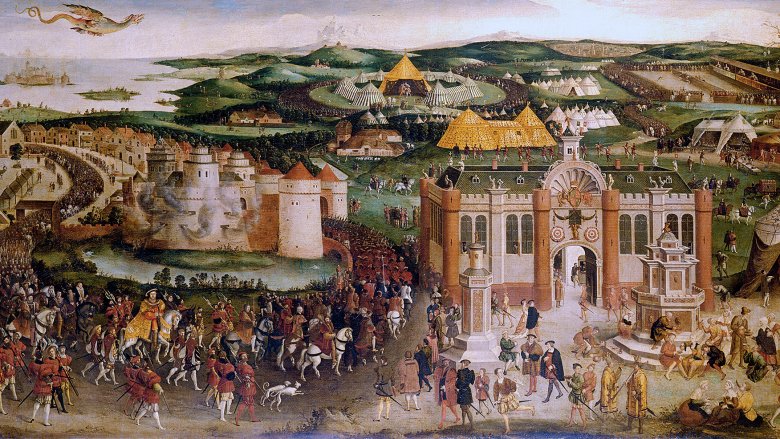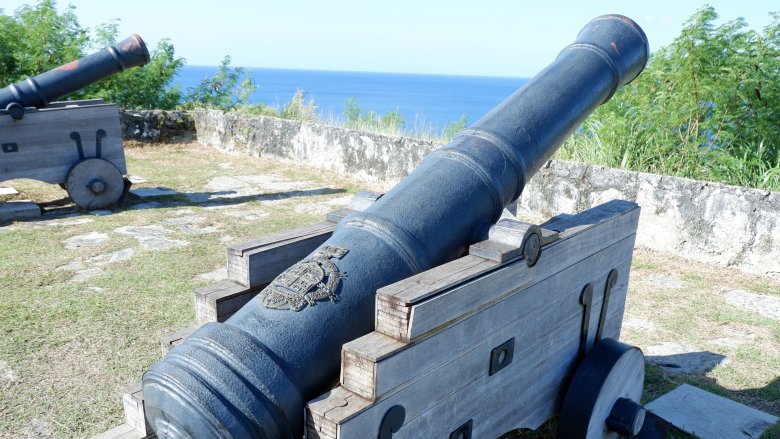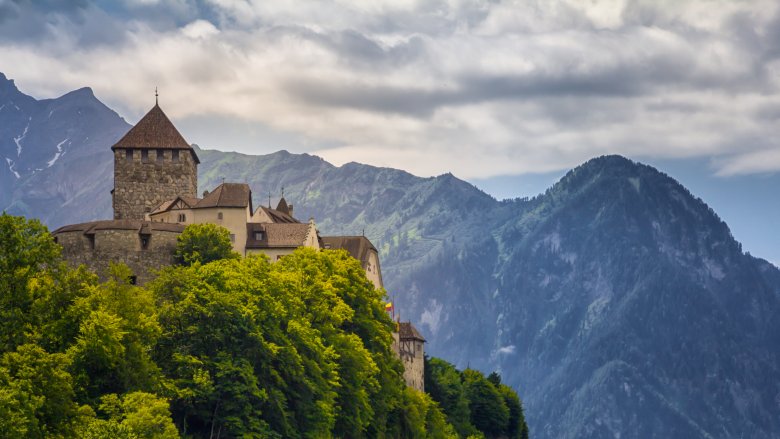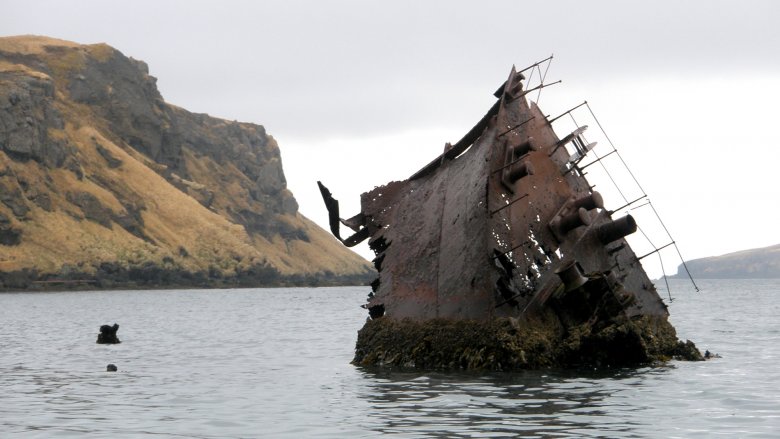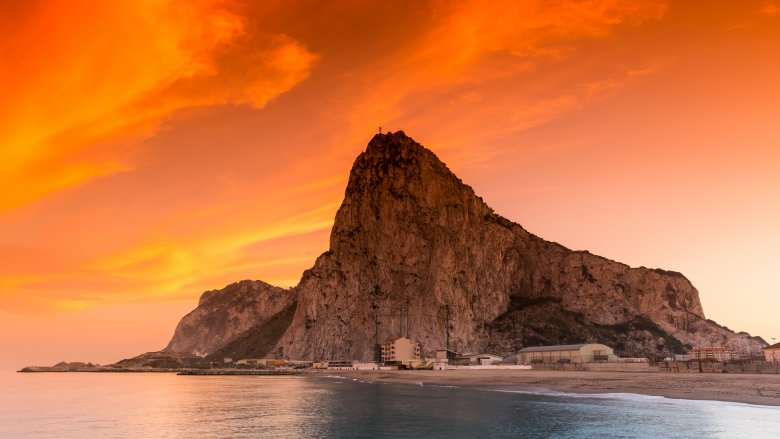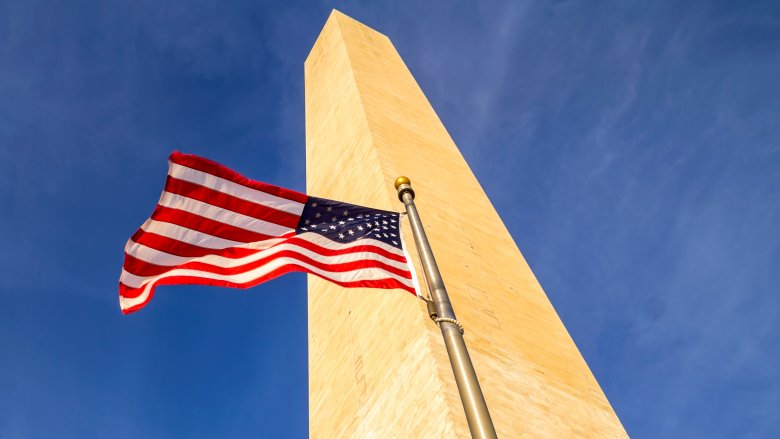Moments That Embarrassed Entire Countries
We've all embarrassed ourselves at some point; it's just human nature. Dropped food on yourself at dinner with that cute guy you've been crushing on? Yeah, he saw it. Said something that you meant but shouldn't have said to your boss? She heard you, sorry. You can try and explain away that look on her face all you want. But these mistakes made entire countries blush. If countries were capable of vasodilation, of course. The truth is, while countries can be large or small, they're run by people. And people are capable of some pretty interesting kerfuffles.
The Field of Cloth of Gold
Better known as how France threw a boatload of money at a playdate with King Henry VIII and still wound up at war. According to Luminarium, through rising tensions, a meeting was arranged between King Henry VIII of England and King Francis I of France in an effort to preserve the fragile peace negotiated through the signing of the Treaty of London in 1518.
So in the summer of that year, the two monarchs met near Calais and entered into the world's fanciest whizzing contest. Since the castles in nearby Guines and Ardes were too shabby for the kings' liking, they met up in a field. By regal standards, this meant erecting temporary palaces made of gold cloth, complete with chapels and pavilions and even a gilt fountain for King Henry that rotated water and wine (via Britannica). Because why not?
Both parties rolled onto the scene with full entourages, dressed to the nines with splendor to spare, and the spectacle has been painted, made into tapestries, and written about by poets. Never mind that it nearly emptied the coffers of both countries. But after three weeks of jousting, dancing, and general merrymaking, King Henry walked away in shame after challenging Francis to a wrestling match and losing quickly. Ouch. Weeks later, England made an alliance with Charles V of Spain, and war soon followed.
We're at war? Spain's Great Kerfuffle
Usually when you're in the middle of a war, you know about it. Unfortunately for Spain, they forgot to inform the Pacific island of Guam. According to History, in June 1898, American forces arrived via the USS Charleston to capture the Spanish-controlled island and sent out warning shots (because the U.S. is nice like that). After no initial reply, eventually a welcoming party came rowing out to meet the invaders, at which point the islanders apologized for not having promptly responded to the Americans' impressive salute. According to War History Online, they even asked to borrow some gunpowder in order to return the gesture. (Since they didn't know they were at war, they apparently had no powder.)
Instead of capturing the poor schmucks who'd so happily rolled out the welcome mat, Captain Glass of the Charleston allowed them to return to shore to inform Governor Juan Marina that they were at war and currently under attack. The governor responded to Captain Glass by inviting him onto the island with assurances of his safety, but Glass replied that Marina had half an hour to surrender. Twenty-nine minutes later, Marina capitulated.
Switzerland's accidental invasions of Liechtenstein
Switzerland is mostly famous for its neutrality, its chocolate, and its Alps. But every country does something facepalm-worthy, and apparently for the Swiss, it's repeatedly invading its tiny neighbor Liechtenstein. In fact, it's done it on so many occasions that when 170 Swiss infantry soldiers wandered more than a mile past the border on March 1, 2007, according to The Guardian, an interior ministry spokesman simply responded with, "It's not like they stormed over here with attack helicopters or something." Once they realized their error they hoofed it back to Switzerland and no harm no foul. Easy!
Australian Broadcasting Corporation says things weren't so easy in 1968, when Switzerland threw real grenades on a ski resort during a live-fire drill gone horribly wrong. Luckily for Switzerland, Liechtenstein, and anyone who thought skiing was a great idea that week, no one was injured.
In 1992, five soldiers went on a training mission to the small town of Triesenberg, where they holed up in someone's empty house and went about the business of their mission. The problem? No one realized Triesenberg wasn't in Switzerland. Before the local authorities arrived (the neighbors snitched) the soldiers had made a dash for the border. Next time you get lost on a road trip, just keep in mind that even the well-trained sometimes get a little off track. Or lose track of an entire country. You know, "potato, pot-ah-to, Switzerland, Liechtenstein."
The Bay of Pigs
According to the Miami Herald, "The commander of the Bay of Pigs invasion, José Perez San Roman, kneeled and kissed the sand with joy when he landed at Playa Girón on the south coast of Cuba. Two days later, his 1,500 men had been thoroughly defeated." That about sums it up. But in case you blocked out history class, on April 15, 1961, the U.S. invaded Cuba, using mostly expat Cubans, with the intention of overthrowing Castro and pretending it hadn't had anything to do with it. To make matters worse, the government covered up most of the details for 50 years.
Eventually it all came out, but the embarrassment was twofold. First, the failed invasion led to the Cuban Missile Crisis, and then when the CIA declassified most of the documents in 2011 (and the final volume in 2016), there was another round of shame after all the details came out. For example, according to the CIA documents, American lives were lost. The official story for years was that no Americans died during the invasion, but four pilots in the Alabama National Guard were killed.
Also, according to those same CIA files, several guys thought it was a smart plan to collaborate with the Mafia in order to assassinate Castro. In retrospect, that might have actually worked. And those are just a couple of tidbits — there are five volumes of documents. So sit back, grab your coffee, and bask in the shame.
Operation Cottage
It's a toss-up whether this one goes to the USA or Canada as far as being an embarrassment, as it did a number on both countries. As told by researcher Del C. Kostka, on August 15, 1943, U.S. and Canadian forces launched an amphibious attack on the northern Pacific island of Kiska. They fought the Japanese hard, carrying on through zero-visibility fog, rain, and cold for two solid days of machine gun and artillery fire.
The problem? The Japanese had sneaked through the Allied blockade of the island three weeks before, leaving the Canadians and Americans alone to fire on each other.
After the firing stopped, and everyone took a good look around the island, they were ironically reminded that just prior to Operation Cottage, the U.S. had dropped thousands of leaflets on the island to relay to the Japanese that their situation in Kiska was about to get ugly and that they should just quit. It was good advice, so the Japanese took it.
The War of the Emus: Australia's crushing defeat
Everything in Australia is already trying to kill you. From giant spiders, to kangaroos with personal vendettas, you're pretty much in danger from the moment you step out your front door. But in 1932 the military got involved. Emus, those 100-pound, flightless birds that are kinda cute when you see them on television, are apparently invincible marauders that were raiding and destroying crops en masse in the 1930s.
In fact, they had already kicked some farmers off their land by the time the agricultural community requested government aid. So on November 1, 1932, a small armed party of the 7th Heavy Battery led by Major C.W.P. Meredith set out for an area near Campion to defeat the emus. Armed with machine guns and 10,000 rounds of ammunition, the men were in good spirits. But when the initial encounter with the tough birds proved their skin was nearly impervious to all but the most direct hits, things took a turn.
The next day, Meredith's men ambushed about 1,000 emus (multiple machine gun nests firing from several directions), but didn't even manage to kill a dozen of them. The campaign lasted a full week until Meredith retreated on November 8, in a mixture of despair and awe. Meredith said of the flightless birds, "If we had a military division with the bullet-carrying capacity of these birds it would face any army in the world. They can face machine guns with the invulnerability of tanks."
Slovenia: The Erased
Every government on earth has done something not-so-intelligent at one point or another, but this one might take the cake. On February 26, 1992, the Republic of Slovenia erased 25,671 people from its register of permanent residents when it became a sovereign nation — about 1 percent of the population. They became known as The Erased. While that sounds like the title of a cyberpunk novel, it's nowhere near as awesome as it sounds.
According to Amnesty International, The Erased have had trouble getting adequate healthcare and finding employment. Some have been driven to extreme poverty. Measures have been taken to try and fix the problem, but the government didn't even really admit its mistake until 2010, and still doesn't seem to have fixed the problem, despite several court rulings that Slovenia had violated the rights of the former citizens and that they were entitled to compensation.
But like many bureaucracies, the system in Slovenia has managed to accomplish very little to that end. One man reported that while he has managed to gain back some things, he was still locked out of his bank account in 2017, so if he is awarded any additional money (he was able to get some cash on the sly) he'll likely never see it. Embarrassing for Slovenia? Check. Sad for humanity in general? Also check.
President George H.W. Bush's infamous visit to Japan
Ah, presidential kerfuffles. Few are as memorable as President George H.W. Bush's visit to the prime minister of Japan, Kiichi Miyazawa. On January 8, 1992, the president felt ill during an elaborate dinner, and instead of turning literally anywhere else to get sick, he promptly turned to the lap of the prime minister. He puked there, he was cradled in said puke for a moment, and then he slumped to the ground.
Bush had reportedly been sick prior to the dinner, but he thought his go-round with the flu was over. Alas, somewhere between trying to say all the right things and not say the wrong things, something entirely different came out. It's just as relatable as that dinner with your soon-to-be in-laws where you did that ridiculously embarrassing thing, right?
According to The Atlantic: "The term Bushu-suru – ブッシュする, 'do a bush' — became a joke staple of Japanese slang." Unsurprisingly, it means "to throw up in public." There are worse things to be known for, but it's not exactly awesome.
The accidental British invasion of Spain
Of all the things you might misplace, the Rock of Gibraltar, which stands at an impressive 1,398 feet, might not be high on that list. But in 2002 a few Britons apparently forgot where this little bit of British territory was. According to The Guardian, a heavily armed platoon of British Royal Marines rushed the San Felipe beach in the Spanish town of La Linea (right next to Gibraltar), expecting fellow Brits with dummy fire. Though ready for a fake fight, they did have 60 mm mortars and SA80 assault rifles when they took their positions on the beach.
Well, they had noticed and were met by a shocked fisherman who promptly informed them that they were not, in fact, in Gibraltar. The good new is, the marines were able to make a speedy retreat and went off to find the actual Gibraltar. Pro tip, folks — you'll see a big ol' rock when you're in the right place.
Lord West was First Sea Lord at the time and received the facepalm call from the commanding officer in charge of the mishap. According to the Independent, the officer reportedly said to Lord West, "I'm afraid we've invaded Spain, but we don't think they've noticed." They had, but thankfully these days a phone call and a laugh is usually enough to sort this out. A century ago, this could have started a real war.
The Washington Monument
Most of us have laid eyes upon the impressive obelisk that stands in tribute to George Washington, or at least on photos of it. It might look awesome now, but like most cool things, it had a rocky road to completion. That took some 37 years, which is why it's not all one color, as seen above. Construction started on July 4, 1848, by the Washington National Monument Society, with the laying of the cornerstone. Interested parties were eventually invited to donate stones, including foreign governments, and that's where it all started to go downhill.
Among the donated stones was one from Pope Pius IX, which was later stolen by anti-Catholic radicals and thrown into the Potomac. They formally took over the Monument Society in 1855 (though the existing members didn't care and continued to exist as a second society) until possession of the monument was returned to the original society in 1857. Then the Civil War happened. But the really great part is that during the war someone decided the monument would make a fabulous cattle pen and slaughterhouse. No, that's not a joke. It was called the Washington National Monument Cattle Yard.
Following the war, because apparently a slaughterhouse wasn't gruesome enough, it became known as, "Murderer's Row" because a bunch of army deserters, escapees, and general riff-raff hung out there. Mark Twain famously commented at the time, of its not-so-impressive 176-foot pile of bricks that it, "looked like a hollow, over-sized chimney." Ouch. In December 1884, the monument was finally completed at 555 feet tall.
